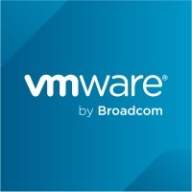IT process automation can significantly lower the cost of IT delivery and reduce the risk associated with manual interactions. BMC Atrium Orchestrator automates common, repeatable tasks to improve quality of service across the board.
- Move from reactive, manual handling of requests to a fully automated system
- Deliver consistent task and automation workflow results
- Automate data collection for audit compliance
- Align with best practices
- Free up IT resources
VMware Aria Automation is a cloud management tool that allows companies to simplify their cloud experience through a modern automation platform. The solution is designed to deliver self-service clouds, multi-cloud automation with governance, and DevOps-based security and infrastructure management. It helps organizations improve IT agility, efficiency, and productivity through its various features.
VMware Aria Automation has multiple use cases that include the following:
-
Self-service multi-cloud: VMware Aria Automation can be used to deliver consistent self-service consumption. Another use case in this area is for delivering infrastructure across VMware Clouds as well as public clouds.
-
Multi-cloud governance: The solution can be used to manage cost, performance, networking, configuration, and security at scale for multi-cloud environments. VMware Aria Automation offers all this with an everything-as-code approach.
-
DevOps for infrastructure: Through VMware Aria Automation, companies can enable a powerful infrastructure as code platform with support for iterative development and infrastructure pipelining.
-
Kubernetes automation: Users can utilize VMware Aria Automation to automate the management of Kubernetes clusters and namespaces with support for vSphere with Tanzu.
-
Security operations: VMware Aria Automation facilitates event-driven automation to deliver full-service IT system compliance enforcement and vulnerability remediation.
VMware Aria Automation Features
VMware Aria Automation has various features that allow users to easily perform operations. Some of the solution's capacities include:
-
VMware Cloud agnostic template: This feature allows organizations to use a single cloud template to deploy with Infrastructure as a Code. Deployment options include VMware Cloud as well as major public cloud platforms such as Amazon AWS, Microsoft Azure, Google Cloud, and more.
-
Extensibility and customization: This VMware Aria Automation feature allows users to get full extensibility and customization. This can be achieved through Aria Automation Orchestrator, Action-Based Extensibility (ABX), and built-in integrations with common third-party tools.
-
Self-service multi-cloud: This feature enables users to request and provision infrastructure resources. It can be done across clouds using a unified and consistent Infrastructure as a Service (IaaS) consumption layer, idempotent REST API, and self-service catalog.
-
Centralized policies and governance: VMware Aria Automation offers a feature for users to manage multiple clouds with templatized cloud and policy definition, automated remediation, and cloud environment visibility.
-
Configuration management: Through this feature of the product, day 1 and 2 control can be achieved for virtualized and cloud environments. This can be done with intuitive configuration automation, compliance enforcement, and vulnerability remediation.
-
Infrastructure pipelining: Through this feature, organizations can access user-friendly release automation pipelines. They can be specifically tailored for CI/CD in infrastructure use cases.
VMware Aria Automation Benefits
VMware Aria Automation offers its users various benefits. Some of the biggest advantages that the solution brings to companies that utilize it include:
- VMware Aria Automation provides faster time to market for companies through offloading manual tasks with advanced workflows and agile templating.
- The solution offers high levels of security and control.
- This product is suitable for beginners, as it offers a self-service consumption experience for users.
- VMware Aria Automation accelerates innovation through Infrastructure as Code and DevOps principles.
- The product provides users with flexibility, as it is compatible with the most popular public cloud solutions.
- The solution offers fast deployment because of all natively integrated functions.
Reviews from Real Users
Awais J., CTO/CEO at a tech services company, likes VMware Aria Automation because it saves a lot of time, provides more visibility, and has extensive automation capabilities.
An IT consultant at a government rates VMware Aria Automation highly because the product gives you flexibility to analyze and consume resources.



